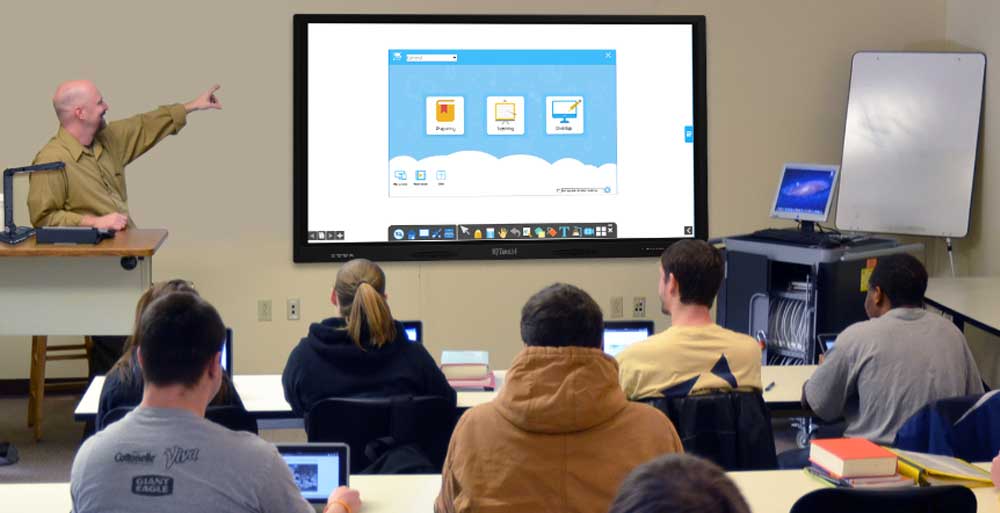
Touch screens have exponentially enriched people’s personal and professional lives in ways that were once unimaginable. Beyond smart phones and tablet devices, this intuitive technology is enjoying considerable success as the focal point of modern collaborative classrooms.
Teachers are moving beyond a focus on content delivery and further towards collaborative lessons to engage students and encourage active participation within the classroom. Given that today’s students are completely at home with interactivity and touchscreen technology and its use is second nature to them, touch screens help to facilitate these goals.
Screens can be operated with a finger or stylus, allowing students to easily navigate applications, edit digital content, make annotations, brainstorm, give presentations, manipulate images and trigger multi-media content. Participation is further enhanced by the multi-touch capacity, whereby multiple students can operate a touchscreen at the one time, interacting with multi-sensory digital content (and each other) in ways that were not possible until now.
In terms of operating systems, mainstream touch screens support Windows (7 or above), while some models also operate with Chrome and Linux, such as IQTouch series. For schools using Windows, Windows 8 and the upcoming Windows 10 have been designed specifically with touch screens in mind, which will further enhance the user experience.
Teachers have the freedom to choose their preferred software applications to support classroom learning and specific tasks rather than being locked into using product-specific software. For schools operating on Windows, it is worth exploring the multitude of apps that complement the curriculum. There is also software available to help teachers, for example, share lesson plans and other materials across different platforms. For example, IQTouch series have IQ Interactive Education Platform software , IQClass Software etc. for teachers to use in classrooms.
To start using the touch screen, users simply turn on the panel, connect USB and HDMI cables to any laptop or PC using Windows 7 or above and the screen is instantly ready for action. Having pre-installed drivers on Macs will provide the same seamless plug-and-play experience.
Touch screens have integrated speakers, which are normally more than ample for the average classroom environment. They also produce bright, colour-rich images ideal for high-resolution video. Adding a web camera turns the screen into a low-cost videoconferencing unit, which, for example, allows collaboration between schools or enables teachers to reach remote students.
Copyright © 2017.Returnstar Interactive Technology Group Co., Ltd All rights reserved.